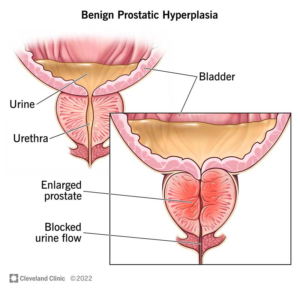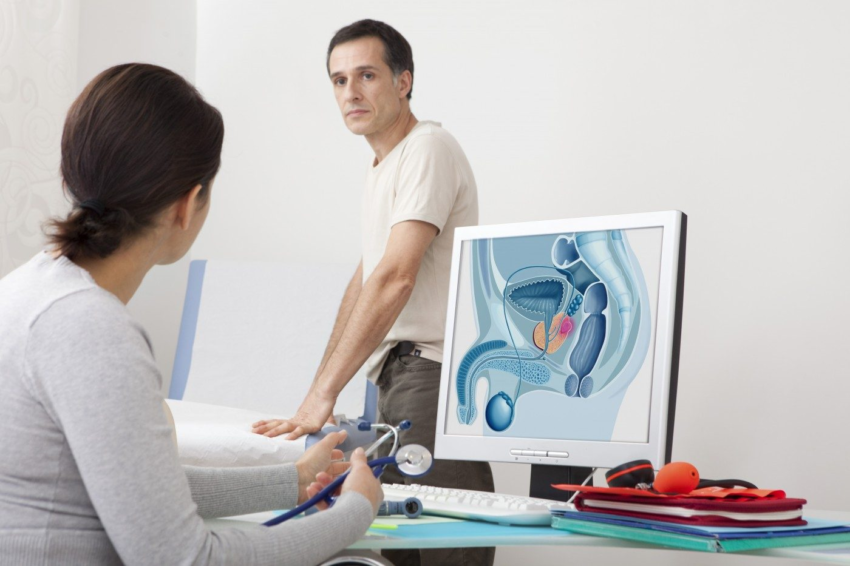Authored by: Humza Rana
The innovative iTind procedure offers effective relief and can empower men to take control of their health and wellbeing. Let’s discuss a subject that impacts countless individuals yet often remains in the shadows: an enlarged prostate, also known as benign prostatic hyperplasia (BPH). It’s time to shatter the silence, eliminate the stigma, and take control of our wellbeing. Here’s why.
Your health is crucial
As we enter our 30s and beyond, our focus begins to shift. The quality of life rises to the top of our priorities, yet many of us hesitate to pursue medical guidance. Why is that? A significant factor is the fear of the unknown. We dread receiving bad news regarding our health, often falling into the misconception that we are indestructible and that health concerns are exclusive to the elderly. However, the reality is that they can affect anyone at any stage of life.

The early signs of BPH might be subtle – more frequent trips to the restroom, difficulty initiating urination – but these symptoms can worsen over time. By the time we reach 25, the prostate starts its natural enlargement process, and by our 50s and 60s, nearly 90% of us will encounter BPH. For those with a family background or specific health issues, the risk could be even greater. Taking prompt action is essential, yet many of us postpone seeking assistance due to feelings of shame, worries about expenses, or simply being too engrossed in other commitments.
Breaking through barriers and surpassing hurdles to access care
The hesitation to pursue medical attention isn’t merely about inconvenience – it’s deeply rooted in societal expectations. Generations of men have been taught to view seeking assistance as a sign of frailty. Masculine standards continue to uphold this stigma, complicating our ability to prioritize our health. However, here’s the reality: putting our health first is the true hallmark of strength. Routine evaluations, which include appointments with a primary care provider and, if necessary, a urologist, are essential. Don’t let intimidation or ego obstruct your wellness.
Exploring the pathway of treatment choices for BPH
So, what can we do regarding BPH? The encouraging news is, numerous options exist. From conservative strategies like observation to pharmaceuticals and surgical interventions, the decision relies on several factors, such as prostate size, age, lifestyle, and overall well-being.
One cutting-edge remedy gaining traction is the iTind (Temporary Implanted Nitinol Device) treatment. This minimally invasive outpatient process provides swift, effective relief without the reliance on daily medications or extensive surgery. Over five to seven days, the iTind device gently reshapes the prostate, broadening the urinary channel without leaving a lasting implant. The procedure is uncomplicated, safeguards sexual and urinary function, and reduces the risk of long-term complications.

Eco-friendly medical devices paving the way for a sustainable tomorrow
The iTind procedure stands out as a groundbreaking solution for BPH, leading the charge in sustainability. Recent findings reveal that iTind boasts the smallest carbon footprint compared to its counterparts, utilizing the least quantity of raw materials. This aspect is crucial as the carbon footprint (CF) is increasingly significant in healthcare, amidst rising concerns over climate change. The proliferation of single-use minimally invasive surgical instruments intensifies environmental consequences, further emphasizing the necessity of low CF alternatives like iTind. In the realm of medical devices, low CF choices such as iTind are gaining prominence as they help alleviate the ecological strain of healthcare operations. With the healthcare industry being a major contributor to global carbon emissions, embracing devices with minimal CF is vital for reaching sustainability targets. The resource-efficient nature of iTind, along with its reduced environmental footprint, makes it a conscientious selection for both patients and healthcare professionals who prioritize their ecological impact.
Prevention Measure
Benign Prostatic Hyperplasia (BPH), often dismissed as a natural part of aging, is more than a mild inconvenience. While early symptoms such as frequent urination, weak flow, or difficulty emptying the bladder may appear manageable, the condition can silently progress, leading to significant complications like urinary retention, bladder damage, and kidney problems. Advanced prevention strategies emphasize the importance of proactive measures such as lifestyle changes, regular screenings, and innovative treatments. A healthy diet, weight management, and regular exercise can help slow the progression of BPH, while early detection through digital rectal exams and PSA tests can catch changes before they escalate. Minimally invasive solutions like the iTind procedure (Temporary Implanted Nitinol Device) are also transforming care by offering effective relief without the risks of major surgery or long-term complications. Public awareness campaigns play a vital role in educating men about the benefits of early intervention and prioritizing prostate health. By embracing these strategies, we can address the silent burden of BPH, improving quality of life and reducing the healthcare burden in the years to come.
Welcoming transformation and altering the discourse
It’s time to transform the conversation about men’s health. Let’s cultivate an environment where seeking assistance is viewed as a testament to strength, not frailty. We should place our well-being at the forefront and inspire one another to do the same. An enlarged prostate may be prevalent, but it doesn’t have to shape our identity. Through awareness, education, and access to groundbreaking treatments, we can regain control of our health and live life to the fullest. Keep in mind, your health is essential. Don’t wait for symptoms to worsen – take the reins of your health now. Shatter the silence, reach out for support when necessary, and collectively, let’s redefine what it means to be men who prioritize their well-being.
Advanced Technology for Diagnosis
Advanced diagnostic methods are revolutionizing the detection and management of Benign Prostatic Hyperplasia (BPH), ensuring accurate assessments and tailored treatments. Beyond traditional approaches like the digital rectal exam (DRE) and Prostate-Specific Antigen (PSA) testing, innovative techniques are providing deeper insights into prostate health. Imaging technologies, including transrectal ultrasound (TRUS), allow for precise measurements of prostate size and structure. Urodynamic studies assess bladder pressure and flow, offering valuable data on urinary symptoms and their severity. Additionally, multipara metric MRI is emerging as a non-invasive option to evaluate prostate anatomy and detect abnormalities with exceptional clarity. Cutting-edge biomarkers, such as the Prostate Health Index (PHI) and 4Kscore, offer more specific insights into the risk of BPH progression or related conditions like prostate cancer. These advanced diagnostic tools are transforming the care pathway by enabling earlier detection, minimizing unnecessary treatments, and personalizing interventions to improve patient outcomes.
Conclusion
Artificial intelligence has proven invaluable in the screening, symptom analysis, investigation, and management of benign prostate hyperplasia (BPH). By enhancing the ability to predict clinical outcomes before surgical intervention, AI assists surgeons in making better-informed decisions. The Prostate Cancer Research Program (PCRP) follows a high-risk, high-reward approach, which has significantly contributed to discovering new treatments. The program has seen substantial growth in funding, from $45 million in 1997 to $110 million in 2023. As additional funding fuels innovations, we move closer to minimally invasive surgeries with less pain and shorter recovery times. BPH, a common but manageable condition, benefits from early diagnosis and advances in medical science, improving patient outcomes. Personalized treatment strategies that incorporate lifestyle changes alongside modern medical interventions ensure optimal symptom control and an enhanced quality of life for individuals with BPH.
Q/A
- Explain BPH?
A) Benign Prostatic Hyperplasia (BPH) is a non-cancerous enlargement of the prostate gland, commonly seen in men as they age. The prostate surrounds the urethra, which carries urine from the bladder out of the body. When the prostate enlarges due to BPH, it can press against the urethra, partially blocking the flow of urine, which can lead to urinary symptoms such as frequent urination, weak urine flow, or difficulty emptying the bladder. - What is iTind?
A) The iTind procedure is an advanced, minimally invasive treatment for Benign Prostatic Hyperplasia (BPH), designed to alleviate urinary symptoms caused by an enlarged prostate. It involves no incisions and does not leave permanent implants. The iTind device (Temporary Implantable Nitinol Device) works by gently reshaping prostate tissue to improve urine flow and relieve obstruction. The device is inserted into the urethra in a urologist’s office or outpatient setting under local anesthesia. It remains in place for several days before being removed. During this period, the device expands and applies pressure to critical areas of the prostate, creating channels that reduce obstruction and improve urine flow.
Sources
- ZeroCancer: Federal Research Funding (PCRP)
- PMC Article on AI in BPH Diagnosis and Management
- Omnia Health: Breaking the Silence on BPH
